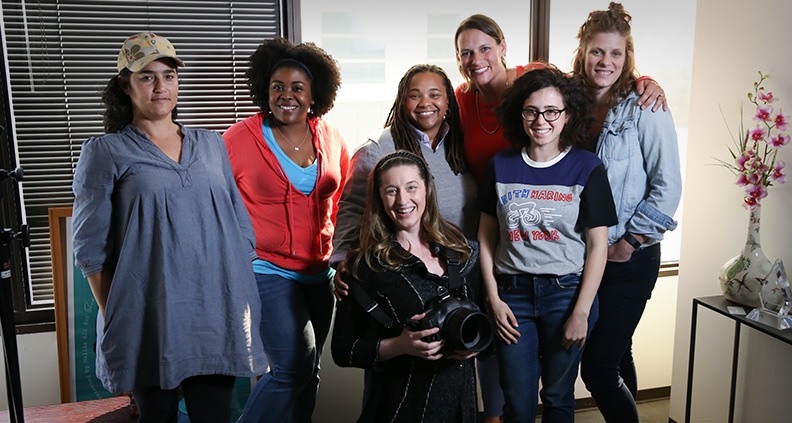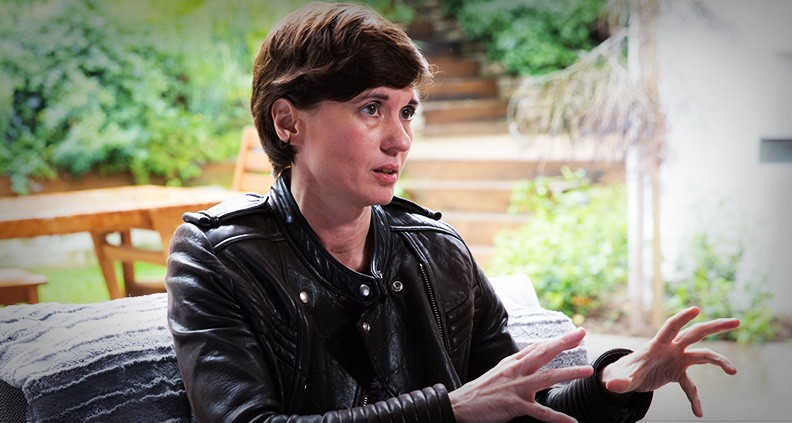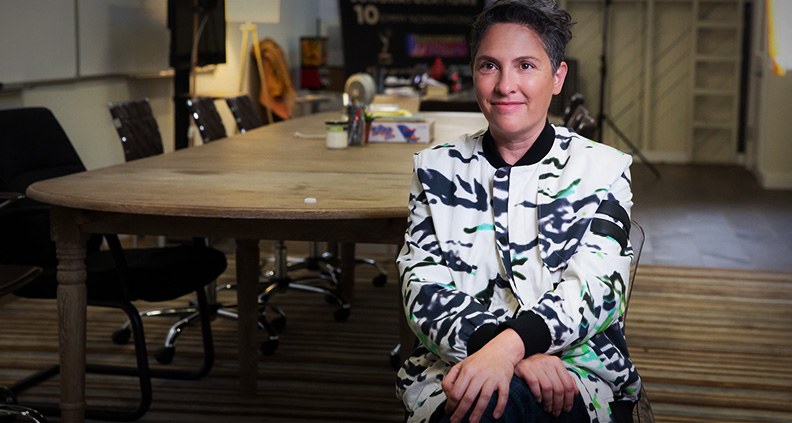‘Half the Picture’ Explores Hollywood’s Director Gender Gap
Google the term “film director” and look at the image results. What do you see? The answer is… a collection of white male faces. What you don’t see, with few exceptions, are women. Unfortunately, gender inequality at Hollywood’s top creative levels is hardwired into the DNA of the entertainment industry; the number of notable female film directors has declined over the second half of the 20th century into the 21st.
Regardless of who you are, this is a huge problem. The disparity in the number of female directors vs. their male counterparts is the subject of Amy Adrion’s new documentary Half the Picture. The film, which premiered at this year’s Sundance, features interviews with a who’s-who of today’s top female filmmakers—Miranda July, Lena Dunham, Ava DuVernay, Catherine Hardwicke and more—discussing the difficulties of establishing and sustaining a career as a woman director in today’s Hollywood ecosystem.
The film, Adrion’s debut feature, opens this Friday at the Laemmle in Santa Monica and will be available on SVOD and On Demand next month. Her earlier short film work has played at a variety of festivals, including the LA Film Festival.
We recently caught up with Adrion to discuss what drew her to this subject, her inspiring interviewees, #MeToo and much more. Here’s the conversation:
AMY ADRION AND ‘HALF THE PICTURE’

This is your first documentary. What led you to exploring this issue, of the lack of female directors in Hollywood?
Adrion: I went to graduate school for film at UCLA. I made some documentary shorts, but largely narrative shorts that played around at good festivals and won some awards. As I was trying to get my narrative script it was hard—as it is for everyone—to find money. Particularly for stories centering on women. At the same time the ACLU led an investigation into systematic discrimination against women directors, so it seemed like my personal struggles were intersecting with the larger struggles of this community of women directors. It seemed like a really exciting time. These issues were being taken seriously and really powerful entities were legitimizing the stories that women directors have been talking about for decades. I really wanted to document that.
In your view, what are the most immediate obstacles for female directors?
Adrion: Statistics show that women tend not be in networks where people have access to financing. That’s the biggest impediment. There’s still some cultural discomfort with investing in women and seeing women as a good financial asset and seeing them as creative leaders with vision. I’ve met Ruth Ann Harnisch—she’s a philanthropist and does work on women’s issues—and she said, “The future of feminism is finance.” For women starting out in their careers, they have a harder time finding financing and the budgets they need to tell their stories.

What sort of solutions are being proposed or enacted by the filmmakers themselves, but also at the studios?
Adrion: You know, there are these forces working against you and there are these biases in the industry. But if this is what you want to do, you just have to put your head down and keep making work despite all that. It’s easier said than done. As for the studios, there are a lot of initiatives that are being suggested and that are being implemented, whether that’s inclusion riders or increased shadowing and mentor programs, which honestly have a spotty record for resulting in any actual employment of women. But there are male allies, such as Ryan Murphy, who are changing their hiring practices. Many women in the film have made a significant difference by casting more people of color and the underrepresented on the shows that they run. So basically the solution to the lack of female directors is you have to be open to the talent of women directors out there and hire them. No panel, program or initiative is going to achieve more than hiring one woman director and seeing what she can do.
That’s a good point to make, because it’s something that gets talked about a lot but the tangible results aren’t always there.
Adrion: Right. We did a Q&A after the theatrical opening in New York with Mary Harron. She said she’s cooled on participating in these mentorship programs, which obviously have great intentions. But she said she wound up feeling like it was a waste of everyone’s time, that it’s kind of like spinning their wheels instead of getting them any jobs.
How does this issue sync up with #MeToo?
Adrion: All of these movements are working loosely in conjunction with the support of one another. They’re all different issues, but they’re certainly related. Whether it’s sexual harassment, sexual assault, pay equity for actors and directors or the bias against women, these are all related issues pointing to just the extreme gender imbalance at the highest levels of the business. The most powerful critics, distributors, producers, studio executives and financiers are all still largely white men. I think that kind of environment allows for some of this terrible behavior to exist, just because it’s such an extreme power imbalance.

What resources are available to female filmmakers to help them get their careers started out on equal footing?
Adrion: There are a lot of resources out there, which is really exciting and encouraging. You have groups like Film Fatales, which is a group of women directors who come together once a month to share resources and support one another.Film Fatales and Alliance of Women Directors also provides support and encouragement and help amplify other women’s projects. There’s a group called Film Powered, where women offer classes to one another about different aspects of filmmaking. Back to Film Independent, a lot of the women in our film were Project Involve Fellows and those kinds of systems were essential in helping them get their early work made. You need that support. Filmmaking is a collaborative process and it involves a lot of moving parts.
How easy or difficult was it to wrangle your interviewees to talk about this subject?
Adrion: I think we came at the right time and we did our homework. I’m just so grateful for all the women who sat down with us. I think for a long time women had absolutely nothing to gain by talking about the inequality and injustices within the business. They were afraid of being considered whiners or too sensitive and difficult to work with. I think times are changing and women see the power in supporting one another. And the women in the film are not complainers. These women are fighters and they’re artists.
Finally, what are you going to be working on next?
Adrion: Well, we’re supporting the release of this film for the next couple months. As an indie filmmaker, you’re kind of hands-on with every stage of the process. So I’m doing a lot of work for that. Next, I’m writing a narrative film about a high school girls’ basketball team. It’s kind of like Clerks meets Hoosiers. It’s a coming-of-age sports story that’s very different from Half the Picture.
Half the Picture opens this Friday, June 22 at the Laemmle Theaters in Los Angeles. To learn more about the film, click here.
Not a Member of Film Independent yet? Become one today. Also, follow us on Twitter, Facebook, Instagram and subscribe to our YouTube channel.
(Header: Gina Prince-Bythewood being interviewed for Half the Picture)
